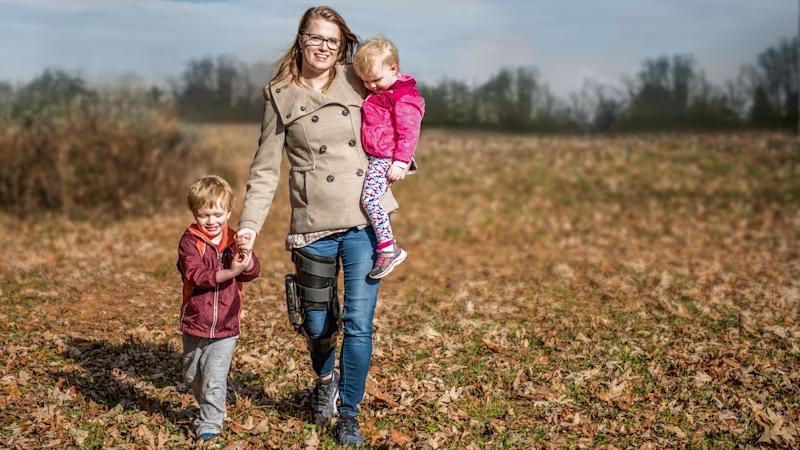Spina bifida (open back)
Spina bifida (open back) is a defect in the area of the spine and spinal cord that occurs at the beginning of pregnancy. Therapy with orthopaedic devices such as orthoses can be beneficial.
Causes, symptoms and treatment
Spina bifida (open back) is a defect in the area of the spine and spinal cord. Since the spine and spinal cord develop from what is known as the embryo’s neural tube, spina bifida is classified as a neural tube defect. Neural tube defects are the second most common congenital malformations after heart defects. An open back occurs more frequently in the area of the lumbar spine and sacrum than in the thoracic spine or cervical spine regions.
Spina bifida occurs in various forms and degrees of severity:
Open spina bifida (spina bifida aperta)
Hidden spina bifida (spina bifida occulta)
Ottobock supports and orthoses

Causes
The exact causes of spina bifida have not been determined so far. We know that the malformation of the spine occurs in the third to fourth weeks of pregnancy. The embryo’s neural tube fails to close normally. The neural tube is an early stage in the development of the central nervous system. The lower section of the neural tube develops into the spinal cord and spine, the upper section becomes the brain and skullcap.
Folic acid (a B vitamin) deficiency or a folic acid metabolism disturbance during pregnancy are considered an important cause of spina bifida. When women who have epilepsy take corresponding prescription drugs during pregnancy, the risk of their baby developing an open back is also increased by about one per cent.
Symptoms
The symptoms can vary considerably. The exact location of the fissure determines whether the malformation affects the spine and to what extent. Spina bifida occulta is entirely asymptomatic in some cases. In this case, the vertebral arch is split in two but the spinal cord is not involved. The malformation remains undetected as a result. On the other hand, an open back – where the spinal cord meninges (membranes) and/or the spinal cord itself are involved in the fissure – can have mild to severe effects. This is called spina bifida aperta, and the symptoms range from barely noticeable complaints to considerable limitations such as paraplegia.
Therapy
Therapy depends on the severity of the spinal malformation. In some cases, no treatment of any kind is required for the minor form of the malformation. With spina bifida aperta, on the other hand, the defect may be significant. Surgery within 48 hours after birth is advisable in this case. Therapy including physiotherapy and orthopaedic devices such as orthoses can be helpful in counteracting joint deformations as a consequence of spina bifida.
Back to everyday activities: three steps to an Ottobock orthosis
- Here you’ll find an overview of all the orthoses and supports that could potentially help you. Take the list with you to your next doctor’s appointment.
- Talk to your doctor about which orthosis is best suited to your symptoms and condition. Your doctor can then write you a prescription for the appropriate orthosis.
- Take your prescription to a medical supply company. They’ll give you your new orthosis and adjust it to fit your exact body measurements.
